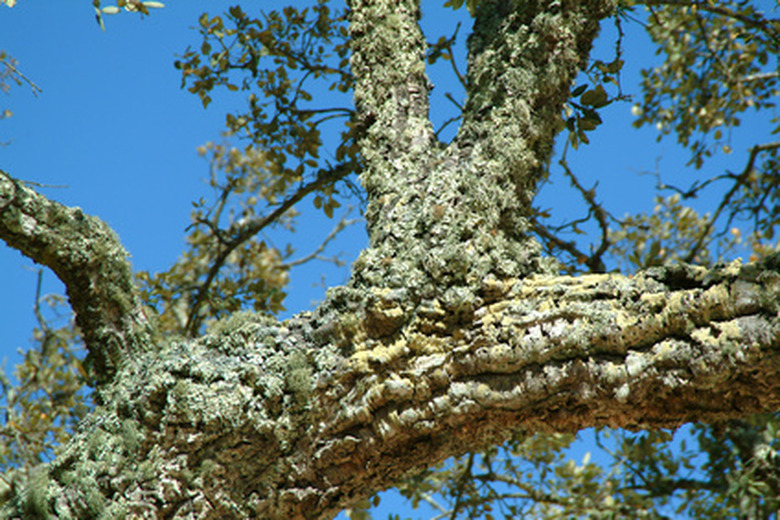How To Plant A Cork Tree
Things Needed
- Shovel
- Garden fork
- Coarse sand
- Compost
- Water
Wine bottle corks traditionally come from the bark of the cork oak tree. The bark of this Mediterranean oak is thick and spongy. Every 10 to 12 years, part of the bark is stripped off in commercial harvests. The cork grows over the next 10 to 12 years making this a sustainable natural product. The scientific name of the cork oak tree is Quercus suber. It is a slow growing tree with an 150- to 250-year life span. Native to the southern areas of Spain and Portugal, this tree does best in the warm wet winters and hot dry summers of a Mediterranean climate.
- Wine bottle corks traditionally come from the bark of the cork oak tree.
- Every 10 to 12 years, part of the bark is stripped off in commercial harvests.
Step 1
Dig a hole that is twice as large as the root ball of your cork sapling. Use a garden fork to carve and rough up the edges of the planting hole. This will break up the soil and allow the roots to grow easily into their new environment.
Step 2
Place coarse sand and rich compost into the bottom of the planting hole to improve drainage and nutrient levels around the root system. Cork trees like medium loamy soil and good drainage.
Step 3
Turn the sapling onto its side and, grasping the base of the trunk, wiggle it back and forth until it comes loose from the nursery pot.
Step 4
Hold the cork sapling over the planting hole so that the base of the trunk is level with the ground. Fill soil in under the root ball or remove soil as needed until the plant can sit in the bottom of the hole with the base of its trunk level with the ground.
- Dig a hole that is twice as large as the root ball of your cork sapling.
- Hold the cork sapling over the planting hole so that the base of the trunk is level with the ground.
Step 5
Fill the soil in around the root ball a few handfuls at a time. Pat down the soil as you go to eliminate any air bubbles around the root system. Air bubbles can cause the roots to oxidize and rot.
Step 6
Water the area around your cork sapling until the soil is damp to a depth of 2 feet. A soaker setting on a hose left for several hours will allow the water to penetrate the soil without pooling and running off.
Tip
The cork oak grows well to USDA planting zone 8. Check the map in the resources section to determine your planting zone. You can plant your cork tree in full sun or in partial shade. Look for flowers in May and June, the seeds will come out in October.
Warning
The cork tree does not do well in maritime climates and cannot tolerate heavy frost or cold.
